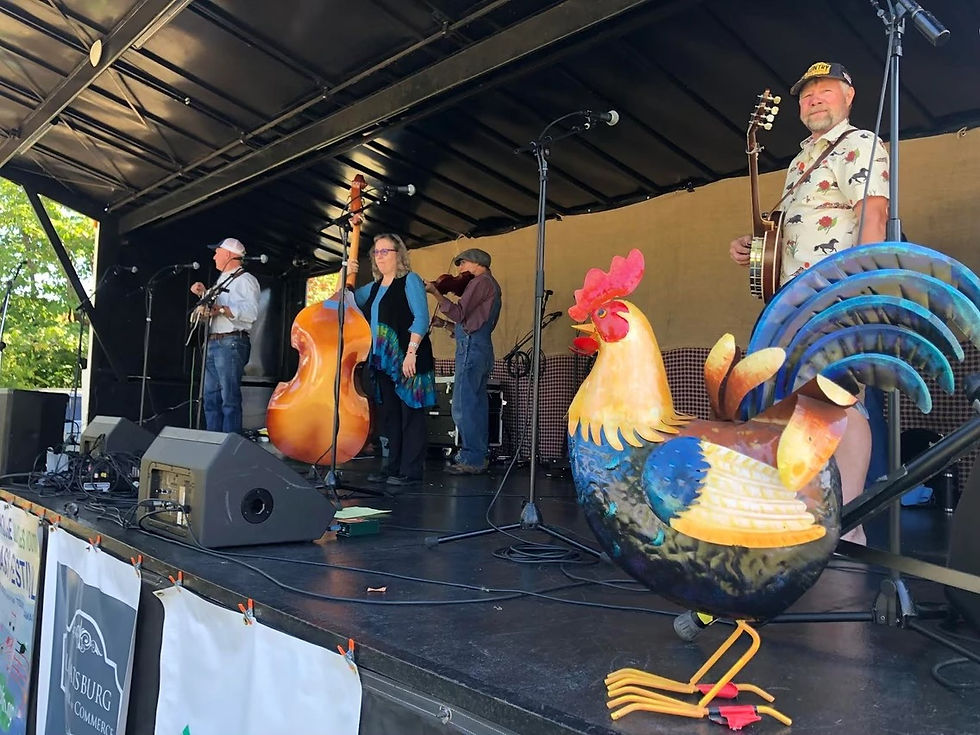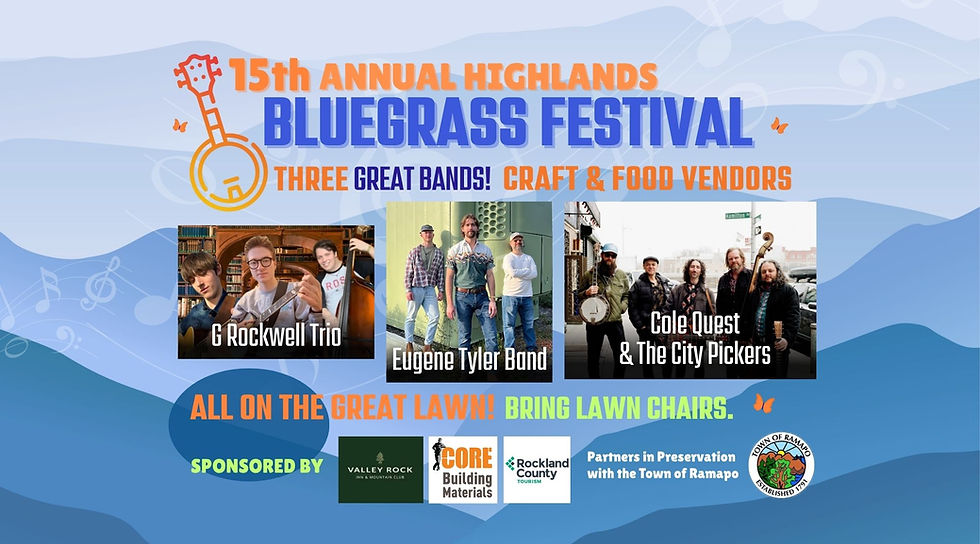Recap of 2023 Autumn Equinox Celebration...
- Friends of Harmony Hall

- Oct 9, 2023
- 3 min read

On Saturday, September 23, guests at Harmony Hall welcomed the new season at the 2023 Autumnal Equinox Celebration Event. Geoff Welch played original keyboard music synchronized to projections of his beautiful nature photography of Ramapo Valley and surrounding Ramapo Highlands.
Photos by Geoff Welch

As an added treat, Harry Leigh, a world recognized sculptor and a former Suffern elementary school art teacher, spoke with projections of his work on a large screen. Mr. Leigh, who has been an invited resident at the Yaddo 17 times, recently had two gallery shows in Berlin, Germany, showing his work in wood. He engaged the crowd with a lively Q&A fielding thought provoking questions. A delightful spread of refreshments was served after the event and the audience was able to continue the conversation.

Below are excerpts from a review of a gallery show by Harry Leigh in 2016:
Click here for the full Article by Stephen Maine.
“Since the early 1970s, Harry Leigh has been producing distinctive, elegant, deceptively simple wall-based sculptures, mainly of wood. Incorporating thin strips or bands of hardwood and bent plywood — and in some cases heavier stock or red bricks — they often frame, bracket, or otherwise ensconce a section of the wall they hang on.
Fifteen of these works constitute a stunningly beautiful exhibition, titled Harry Leigh: Essential Form, ( which were on) view at the Amelie A. Wallace Gallery at SUNY Old Westbury. The show, organized by the gallery’s Director and Curator Hyewon Yi,
presents ample evidence that Leigh is a major, albeit under-recognized, American sculptor who has transformed the Minimalist penchant for reductive form and flat-footed fabrication into something of exquisite lightness, sensuality, and grace.
A native of Buffalo, Leigh graduated from SUNY College Buffalo in 1953 and settled with his wife in Suffern, New York, where he still lives. Leigh was then a painter working with architectural forms and was especially impressed by the work of Abstract Expressionist painter Richard Pousette-Dart, whom he would later meet and informally study with. Peter Voulkos, the Abstract Expressionist ceramicist, piqued Leigh’s interest in sculpture in the late 1950s, when Voulkos taught summers at Columbia University Teacher’s College, which Leigh attended on the G.I. Bill following his Army service. Around the time he graduated, in 1959, Leigh began to work in three dimensions while continuing to paint.

Leigh was involved in the legendary 10th Street gallery scene, where he showed both painting and sculpture. (For decades, the artist kept a studio in downtown Manhattan, including one at the corner of Rivington Street and the Bowery.) By the time of his first solo show, at Brata Gallery in 1967, Leigh felt he should commit to
one medium or the other; he chose sculpture. His painted plywood constructions, often cantilevered with hidden weights such as gravel or bricks, received critical notice. A few years later, a spontaneous experiment in placement yielded his first wall-based sculpture — the idiom for which he would become somewhat better-known by way of exhibitions at O.K. Harris and elsewhere.
In the 1960s, of course, sculptors began to avail themselves of a wide range of techniques and materials, from those used in heavy industry and construction to the natural and ephemeral. Leigh recalls that these material choices would also stake out conceptual territory: “People would ask, ‘well, what is the work about?’ and
we would reply that the how is the ‘what.’ You heard that often, in those days.” An artist’s attitude toward process and materials would convey the feeling and content of the piece; Leigh’s work is assembled in a workmanlike manner, with assiduous attention to detail but without undue fuss.
Drafted into the Army in 1953, Leigh was stationed in West Germany and served as a radio operator. He recently told me that he sees in his sculpture a relation to “the intervals of openness and density” that characterize Morse code: “letters are combinations of long and short signals, and if you want to make yourself understandable, there needs to be proper spacing between the words, too.” It seems to me that the directness of Leigh’s sculpture — its high signal-to-noise ratio and elimination of extraneous visual detail — might at least in part be traced to the
same source.”










Comments